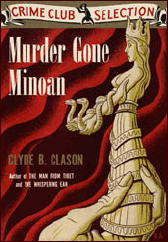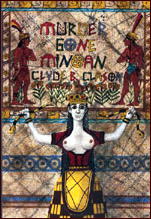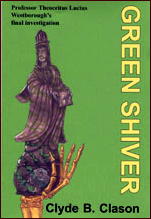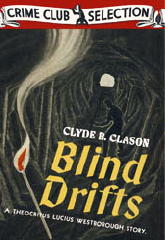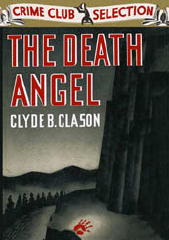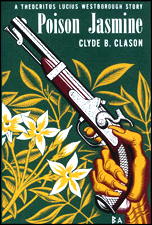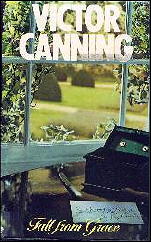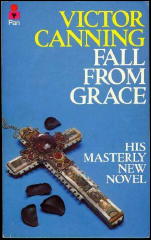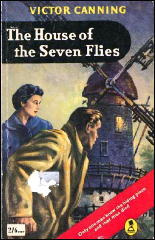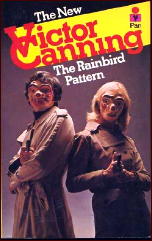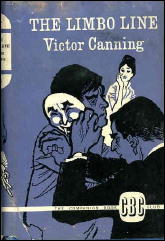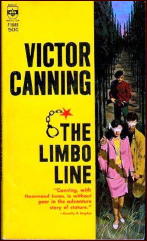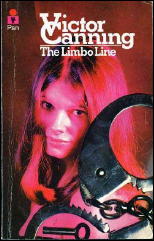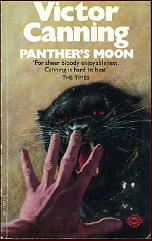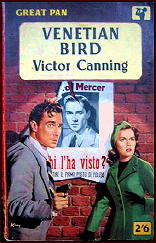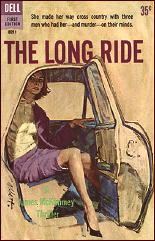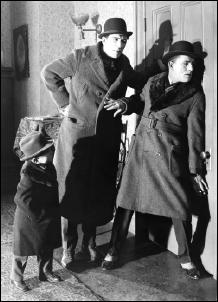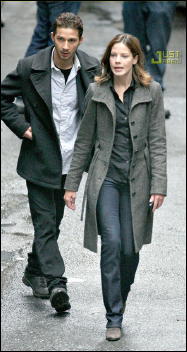Thu 16 Jul 2009
TOO LATE FOR TEARS. United Artists, 1949, aka Killer Bait. Lizabeth Scott, Dan Duryea, Arthur Kennedy, Don De Fore, Kristine Miller. Screenwriter: Roy Huggins, based on his book of the same title. Director: Byron Haskin.
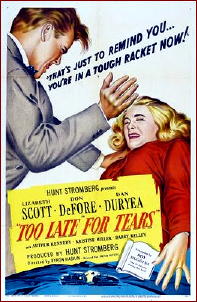
Lizabeth Scott fans, and I know there are many of you, will be happy to know that she pulls out all the stops in Too Late for Tears, as if you probably didn’t already know. I apologize for the cliche in the opening sentence, but it is true.
As Jane Palmer, she and her husband (Arthur Kennedy) are driving down one those hills surrounding Los Angeles one evening when someone in a car speeding by in the opposite direction tosses a bag into the back seat of their convertible.
Stunned, the pair manage to shake the car that begins to follow them immediately . Obviously the bag was intended for someone else; the Palmers have somehow been caught in the middle of something they know nothing about.
One close-up scene will tell you all you want to know about what the rest of the movie has in store. One look at Jane Palmer’s face when she sees the contents of the bag tells the story, all of it. The bag is full of money, stacks and stacks of it. Alan Palmer doesn’t stand a chance. It’s keep the money or lose his wife.
Not being a strong believer in telling a prospective viewer too much, I won’t, but it’s hard to resist. I’ll do my best not to reveal too much, but to tell you the truth, I can’t think of a noir movie as complicated as this one is.
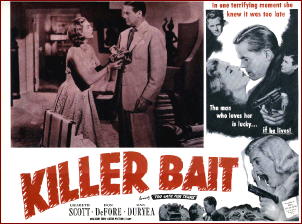
Dan Duryea. The money — a payoff of some kind? — that was meant for someone, that someone couldn’t be played better than by Dan Duryea. Can even he resist being caught up in Mrs. Palmer’s plans?
Don DeFore. He claims to be Alan Palmer’s wartime buddy, Don Blake, but he’s turned up at a strange time. Although friendly enough, even to the point of being somewhat of a sap, he asks too many questions and doesn’t seem to be completely on the up-and-up
Kristine Miller. Alan Palmer’s sister, Kathy, who finds herself falling for Don Blake, while frantically suspecting Jane Palmer of anything and everything.
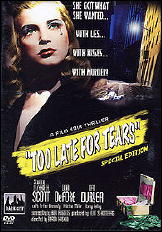
And of course don’t forget Lizabeth Scott as Jane Palmer. She can go from scowling grimness to a smiling luring vamp full of charm in a fraction of an instant. If she sees an opening, she’ll take it in a second.
If ever a woman could devour a man who stands in her way in less time than it takes to flicker an eyelash, it is she.
If you’re a fan of film noir, or even if you aren’t but you’re still reading this — if you haven’t seen this movie, by all means, do something about it, and soon.
I think anyone who’s already seen this movie will tell you exactly the same thing, and for exactly the same reasons. Good direction, a great story, and five well-drawn performances. You can’t go wrong.
Danny Fuller to Jane Palmer: Don’t ever change, Tiger. I don’t think I’d like you with a heart.

